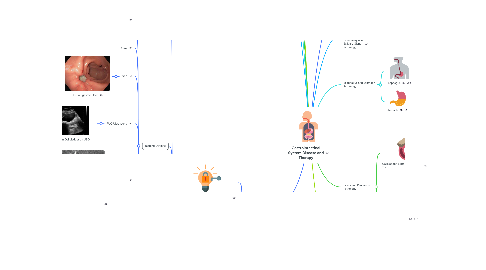
1. Obesity / Nutriton
1.1. Obesity
1.2. Nutrition
2. Non-Infectious Pathology of the Liver
2.1. Viral Hepatitis
3. [Block 2]
3.1. Intestines
3.1.1. Non-Infectious Disease
3.1.2. Infectious Diseases
3.1.3. Pharmacology
3.1.4. Clinical Approach
3.2. Imaging
3.3. Diarrhea
4. Infectious Diseases and Pathogens of the GI
4.1. GI Pathogens
5. Clinical Approach To...
5.1. Clinical Approach to Upper GI,Pancreatic, and Biliary Disorders
5.1.1. Gallstones
5.1.1.1. What are the most common clinical manifestations of gallstones?
5.1.1.1.1. What is the pathophysiology of pain with symptomatic gallstones?
5.1.2. Imaging Options:
5.1.2.1. CT
5.1.2.1.1. Pancreatic Head cancer
5.1.2.2. XRay
5.1.2.3. EGD
5.1.2.3.1. EGD w/ gastric ulcer
5.1.2.4. RUQ Ultrasound
5.1.2.4.1. Numerous Stones in Gallbladder on USG
5.1.2.5. MRCP
5.1.2.5.1. Choledocholithiasis: MRCP w/ gallstone and a CBD stone
5.1.2.6. ERCP
5.1.2.6.1. ERCP w/ CBD stones
5.1.2.7. HIDA
5.1.2.7.1. HIDA scan
5.1.3. Common Causes of Vomiting
5.1.3.1. 1. Gastric Outlet Obstruction: What's the most common cause? When do patients vomit when they have this?
5.1.3.2. 2. Diabetic Gastroparesis: What causes it? When do patients vomit?
5.1.3.3. 3. Small Bowel Obstruction: What causes it? What's the pattern of Vomiting/clinical syndrome?
5.1.3.4. 4. Gastroenteritis: What causes it? What's the pattern of Vomiting/clinical syndrome?
5.1.3.5. How does vomiting a/w a bleeding Peptic ulcer present?
5.1.4. Acute Upper GI Bleed
5.1.4.1. How do patients with acute upper GI bleeds typically present?
5.2. Clinical Approach to Liver Disease
5.2.1. Liver Testing
5.2.1.1. **Purpose of Liver Testing**: 1. Screen for clues of Liver Injury / Disease 2. Quantitate degree of liver function / dysfunction 3. Diagnose general type of liver disease 4. Diagnose specific liver disease
5.2.1.1.1. True **Functional** Liver Tests
5.2.1.1.2. Liver Enzymes in "Liver Function Tests" and Secondary Liver Tests
5.2.1.1.3. **Major Patterns of Liver Injury**: 1. Hepatocellular Injury Pattern 2. Cholestatic Injury Pattern
5.2.1.1.4. Liver Failure: Acute and Fulminant:
5.2.1.2. Summary Table
5.2.1.2.1. Prothrombin Time - **PT**
5.2.1.2.2. Total Protein and Serum **Albumin**
5.2.1.2.3. **Sensitive** Markers of Liver Disease
5.2.1.2.4. **Specific** markers for liver disease
5.2.2. Bilirubin and Jaundice
5.2.2.1. What are the basic mechanisms underlying common causes of unconjugated hyperbilirubinema?
5.2.2.2. Where is Jaundice best seen?
5.2.2.2.1. What lab value matches the appearance of Jaundice on physical exam?
5.2.2.3. What are the two basic mechanisms that when disrupted, result in both unconjugated and conjugated hyperbilirubinema?
5.2.3. Ascites
5.2.3.1. What Test on paracentesis is most likely to uncover the cause of ascites in a patient?
5.2.3.2. Peritoneal Fluid Tests
5.2.3.2.1. WBC and Differential
5.2.3.2.2. Gram stain / Culture
5.2.3.2.3. Cytology
5.2.3.2.4. Bloody Ascites
5.2.4. Cholestatic Liver Disease
5.2.4.1. What are the lab findings of cholestatic liver diseases? What are the common causes?
6. GI Anatomy + Physiology
6.1. Stomach
6.1.1. Mucosa + Glands
6.1.1.1. Gastric Gland
6.1.1.2. Gastric Mucosal Barrier
6.1.2. Cells of the Stomach
6.1.2.1. Chief Cell
6.1.2.1.1. Synthesis and Activation of **Pepsin**
6.1.2.2. Parietal Cell
6.1.2.2.1. Gastric Acid Secretion
6.2. Anatomy: Pancreas
6.2.1. 10% Endocrine Pancreas
6.2.1.1. Islets of Langerhans
6.2.1.1.1. Insulin, Glucaogon
6.2.1.1.2. Diabetes, tumors
6.2.2. 80-90% Exocrine Pancreas
6.2.2.1. Acinar and Duct Tissue
6.2.2.2. Enzymes for digestion of food
6.2.2.3. Pancreatic juice
6.2.2.4. Diseases of the Exocrine Pancreas
6.2.2.4.1. Acute Pancreatitis
6.2.2.4.2. Chronic Pancreatitis
6.2.2.4.3. CF
6.2.2.4.4. Tumors
6.2.3. Histology of the Pancreas
6.2.3.1. Normal Histology
6.2.3.2. Normal Histology
6.2.3.3. Normal Histology
6.3. Biliary Tract
6.3.1. Gallbladder
6.4. GI Physiology
7. Oral Cavity and Salivary Gland Pathology
7.1. Salivary Glands
8. Esophagus and Stomach Pathology
8.1. Esophagus
8.2. Stomach
9. Biliary and Pancreatic Pathology
9.1. Gallbladder, Extrahepatic Biliary Tract
9.1.1. **Cholecystitis**: ----------------------------------------- Gallbladder Inflammation from **stones** or **ischemia**
9.1.1.1. Calculous Cholecystitis (90%) **Acalculous Cholecystitis: Cystic Artery Ischemia** - *What are the findings of Acute vs. Chronic calculous cholecystitis*?
9.1.1.2. Signs and Symptoms
9.1.1.2.1. Nausea, Vomiting
9.1.1.2.2. RUQ epigastric pain > 6 hours
9.1.1.2.3. Murphy's Sign
9.1.1.2.4. Mild fever, leukocytosis
9.1.1.2.5. What are the **Histological** differences between **Acute** and **Chronic** Cholecystitis?
9.1.1.3. Complications
9.1.1.3.1. choledocholithiasis
9.1.1.3.2. cholangitis
9.1.1.3.3. :arrow_left: Perforation
9.1.1.3.4. Fistula / Gallstone Ileus
9.1.2. **Cholelithiasis**: ----------------------------------------- Stones in the gallbladder. Most: **Asymptomatic**. **Symptomatic:** :arrow_right: *Uncomplicated * - or - :arrow_right: *Complicated * - *How common is it? * - *What is Symptomatic? *
9.1.2.1. What are the stones made of? *Cholesterol* vs *Pigmented* Stones
9.1.2.1.1. Cholesterol stones 80% - Cholesterol - Yellow/Green/Gray Coloring
9.1.2.1.2. Pigmented stones - Calcium Bilirubinate - Brown or Jet Black
9.1.2.2. **Pathogenesis of Gallstones**: - *What keeps stones from forming in normal bile? * - *What changes in the gallbladder / its internal environment promote stone formation? *
9.1.2.2.1. 1. supersaturation of bile with cholesterol 2. Hypomotility of gallbladder 3. Excess mucus secretion in the gallbladder.
9.1.2.3. **Imaging**: *What determines whether or not gallstones show up on X-Ray? *
9.1.2.3.1. Radiopaque Gallstones / Cholelithiasis These stones have :arrow_up: [ Ca2+ ]
9.1.2.4. Risk Factors for Gallstones
9.1.2.4.1. **Cholesterol Stones** - *What role does Estrogen play underlying some of the common risk factors? *
9.1.2.4.2. **Pigmented stones** - *What is the common underlying theme between disorders that predispose to pigmented stones? *
